Travel Guide, Sapa
Conquering the Roof of Indochina: Fansipan Sapa Adventure
Embark on an extraordinary journey to Fansipan Sapa Mountain, the pinnacle of Vietnam and Indochina. This majestic peak stands as the highest mountain in the region, treating adventurers and enthusiasts alike to unparalleled vistas of lush valleys, vibrant forests, and charming hill villages. Whether you’re a seasoned trekker seeking the thrill of conquering new heights or simply yearning to stand atop this natural wonder, Fansipan guarantees an unforgettable experience that will capture your heart and leave you in absolute awe.
Fansipan Mountain Overview
Fansipan Mountain is situated in the Hoang Lien Son Mountain Range in the Lao Cai Province of Northwestern Vietnam, roughly 9 kilometers southwest of Sapa Town. With a height of 3,143 meters above sea level, Fansipan Height is the tallest mountain in both Vietnam and Indochina.
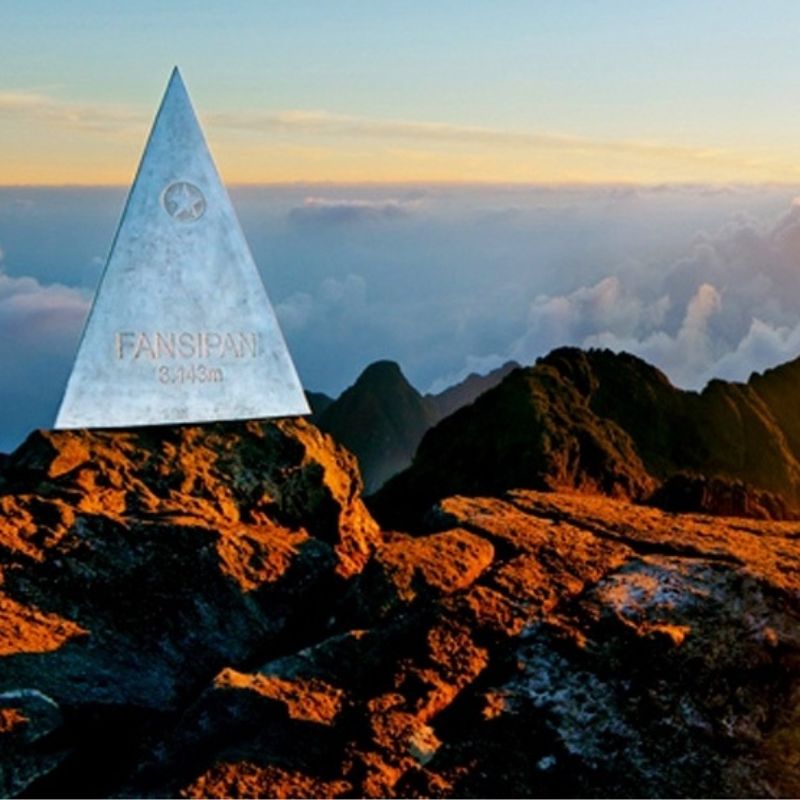
The highest peak in both Vietnam and Indochina, Fansipan Mountain, part of the Hoang Lien Son Range, is what gave it the moniker “The Roof of Indochina.” Fansipan’s geologic history began some 250 million years ago, during the Paleozoic and Mesozoic eras when it spontaneously formed between the Permian and Triassic.
At the peak, the typical summer temperature is 15-20 degrees Celsius, and the winter temperature can dip to below freezing. The mountain is renowned for its great biodiversity and complex ecology, which include numerous uncommon plant and animal species that are unique to the area.
Fansipan Mountain weather all year round
Fansipan Sapa Mountain, located in the northern part of Vietnam, near Sapa, is renowned for its captivating beauty throughout the year. Each season imbues the terrain with a distinct allure:
Spring (March to May)
During spring, Fansipan comes alive with vibrant colors as flowers bloom and trees regain their greenery. The terraced rice fields surrounding the mountain are filled with water, creating a stunning reflective surface. The weather is generally mild, making it an excellent time for trekking and enjoying the fresh, crisp air.
Summer (June to August)
Summer brings lush greenery to Fansipan. The higher temperatures make trekking more comfortable, but occasional rain showers are common. The landscape is at its most vibrant, with the terraced fields reaching their peak of greenery. Fog and mist may add a mystical touch to the mountain, creating dreamy, atmospheric scenes.
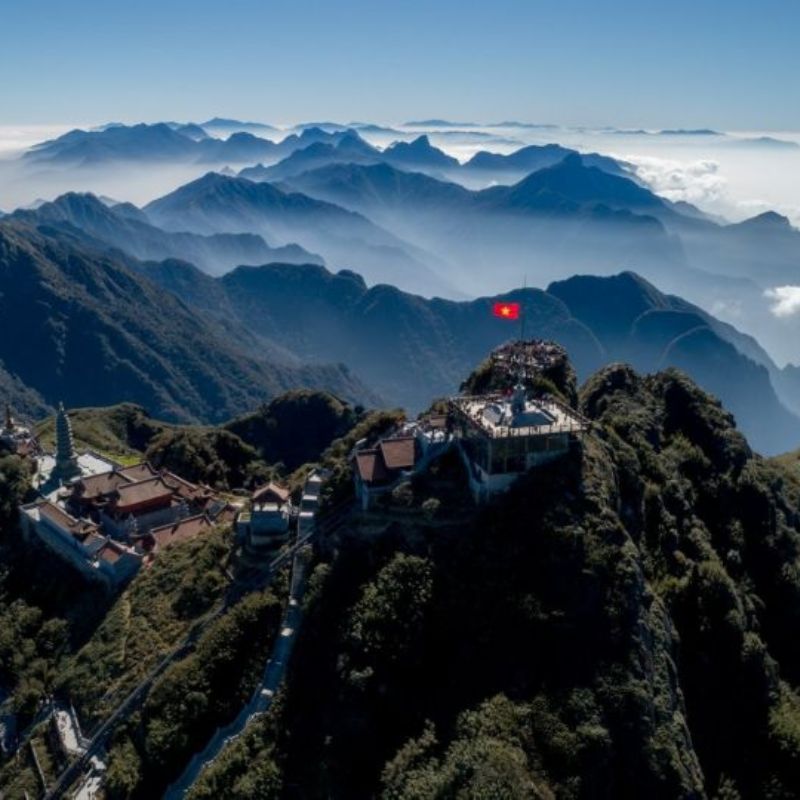
Autumn (September to November)
Autumn is a fantastic time to visit Fansipan Sapa as the rice fields turn golden, creating a breathtaking contrast against the clear blue skies. The weather remains pleasant, and the air is crisp. The visibility is typically excellent, offering stunning panoramic views from the summit.
Winter (December to February)
Winter transforms Fansipan into a magical winter wonderland. The temperatures can drop significantly, and it’s not uncommon to see frost or even snow at the summit. The misty and snowy landscapes create a serene and ethereal atmosphere. While trekking in winter requires more preparation for colder conditions, the views can be incredibly rewarding.
Whether you prefer the vibrant colors of spring, the lush greenery of summer, the golden landscapes of autumn, or the magical snow-covered scenes of winter, Fansipan Mountain has something captivating to offer year-round. Each season provides a unique perspective on this iconic Vietnamese peak.
How to get to Mount Fansipan Sapa?
You must first arrive at Sapa Town to reach Fansipan Sapa Mountain. The majority of visitors go by bus or rail from Hanoi to Sapa. By bus, it just takes five or six hours. However, when drivers are traveling upward, the routes might break your heart since they are exceedingly stiff, small, and slippery. Alternatively, passengers can take an 8-hour nighttime train to the Lao Cai train station, which is a safer choice. Sleeper berths on the train between Hanoi and Sapa are reasonably pleasant, and ideal for unwinding before the arduous ride (if you’re going up).
There are two methods to get to the top of Fansipan Sapa: hiking Fansipan Mountain or taking the Fansipan cable car service.
By cable car
Many choose the most expedient, quick, and secure option, which is the Fansipan Mountain cable car. The cable car system makes it possible for nearly all visitors to reach Fansipan’s summit and take in the breathtaking panorama.
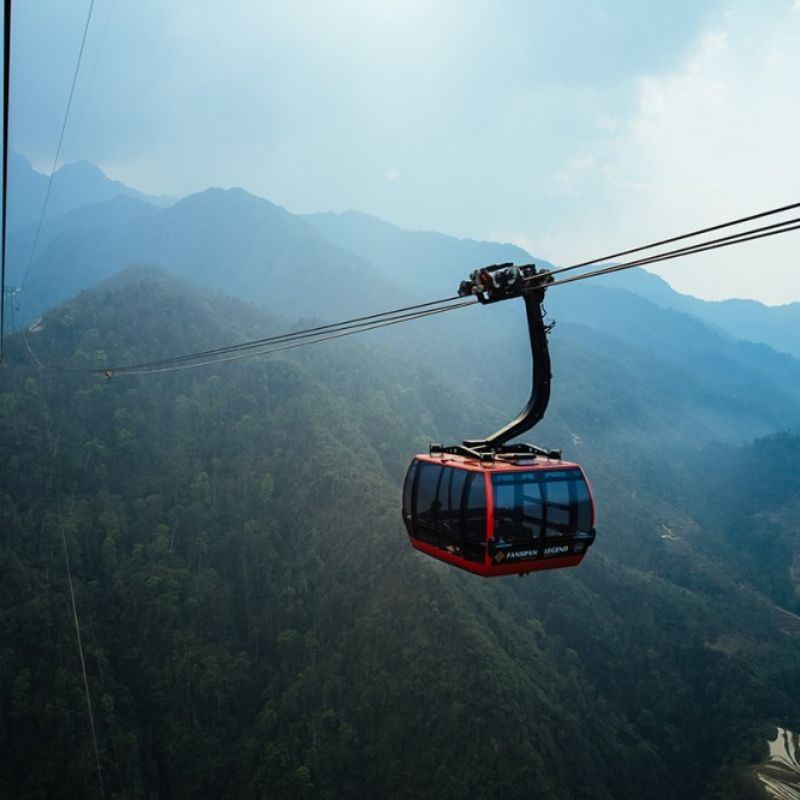
The Fansipan Legend cable car is one of the longest and highest cable cars in the world. The journey offers breathtaking views of the Hoang Lien Son mountain range, terraced rice fields, and the Muong Hoa Valley. The cable car takes you directly to the summit of Mount Fansipan Sapa. The cable car runs every day from 7:30 am to 5:30 pm. The cost of a round-trip Fansipan cable car ticket is as follows:
- Adults: 800,000 VND/ticket
- Children (1-1.4m): 550,000 VND/ticket
- Children < 1.4m: Free
By hiking
If you prefer to reach the summit of Mount Fansipan by hiking instead of taking the cable car, it’s a rewarding but challenging journey. Your trek typically begins in Sapa Town. You may choose to join a guided trekking tour or embark on the journey independently.
There are different trekking routes to the summit, varying in length and difficulty. Popular routes include the Tram Ton Pass and the Cat Cat Village route. Consider your fitness level and the amount of time you have for the trek when choosing a route.
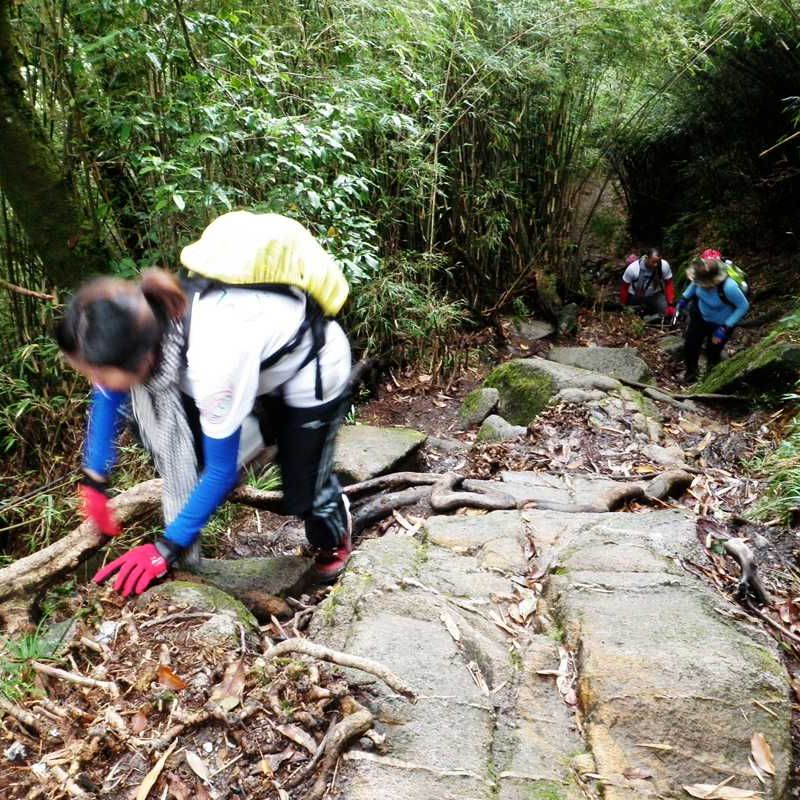
Check if you need any permits to enter certain areas or to trek to the summit. This information can be obtained from local authorities or your trekking tour operator. Remember to pack essentials such as sturdy hiking boots, weather-appropriate clothing, a hat, sunscreen, insect repellent, and sufficient water and snacks. Because the weather might change quickly, be ready for a range of situations.
The Best Things to Do in Fansipan Mountain
Fansipan Mountain in Vietnam offers a range of not-to-be-missed experiences that cater to both adventure enthusiasts and those seeking spiritual and cultural enrichment. Here are the top experiences you should consider when visiting Fansipan Mountain:
Take a ride on the Muong Hoa funicular
Riding the Muong Hoa funicular, which transports visitors to the Fansipan cable car station through Sapa Town in just six minutes, is another experience that visitors to Fansipan Mountain simply must do.
The funicular itself, with its cutting-edge safety features and technology, is an engineering marvel. With a maximum capacity of 2,000 passengers per hour, it’s a highly effective means of moving a sizable crowd up the mountain.
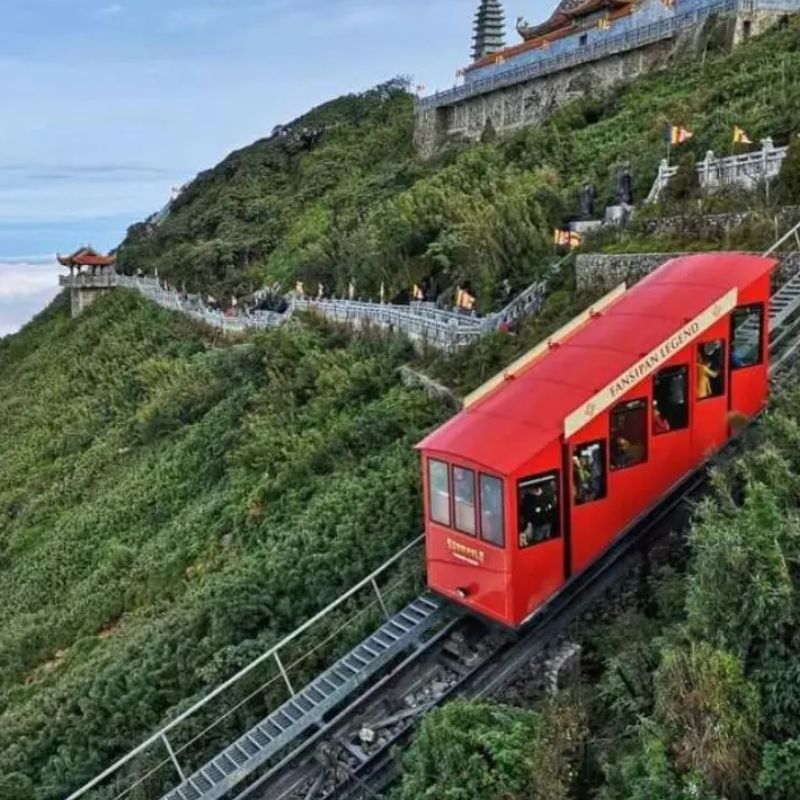
You will be rewarded with breathtaking sweeping views of the surrounding countryside as you rise, encompassing the Muong Hoa Valley, tranquil towns, and terraced rice farms. You will also be able to enjoy the area’s natural beauty and breathe in the clean mountain air.
Enjoy your fantastic trek to Vietnam’s Mount Fansipan
Embarking on a hike to Mount Fansipan in Vietnam is an unforgettable adventure that combines physical challenges with the awe-inspiring beauty of nature. Known as the “Roof of Indochina,” Fansipan stands as the highest peak in Vietnam, offering an exhilarating experience for hikers and nature enthusiasts.
Your journey begins in the picturesque town of Sapa, nestled in the Hoang Lien Son mountain range. The trek to the summit can vary in duration, typically taking one to three days depending on the route and your pace. As you ascend, you’ll traverse a variety of landscapes – from lush forests and bamboo groves to rugged rocky paths. The trail is interspersed with small streams and waterfalls, adding to the scenic beauty of the hike.
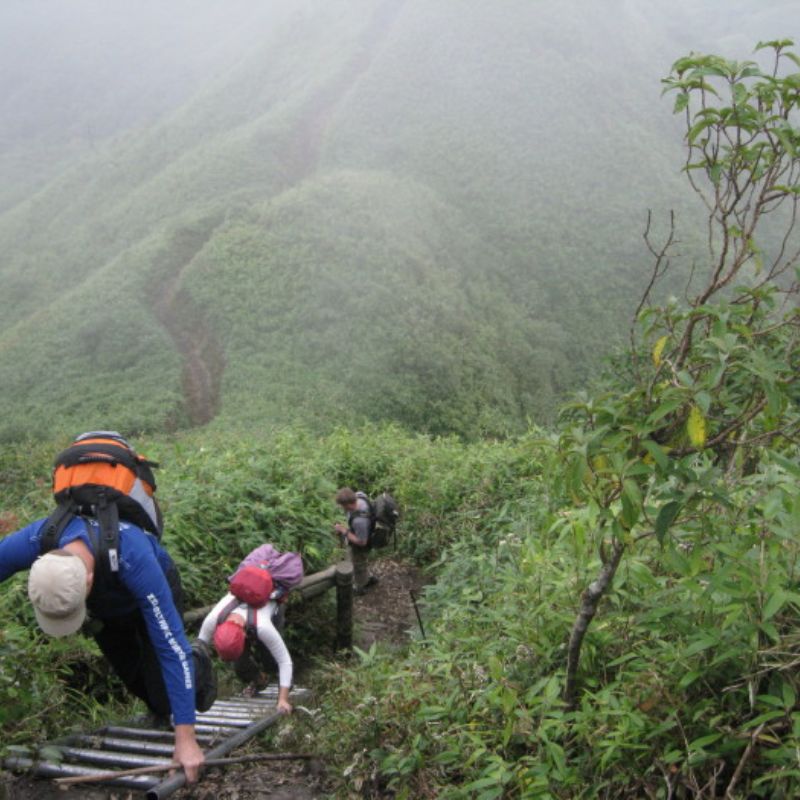
The climb is both physically demanding and immensely rewarding. You’ll encounter a diverse range of flora and fauna, and the higher you go, the more breathtaking the views become. Misty clouds often shroud the mountain, creating a mystical atmosphere.
Reaching the summit of Fansipan Sapa is a moment of triumph. At 3,147 meters (10,326 feet) above sea level, you’ll feel like you’re on top of the world. The panoramic views of the surrounding mountains and valleys are spectacular, offering a sense of serenity and accomplishment.
Explore a complex of spiritually significant sites
The majority of visitors are aware that Sunworld Fansipan Legend is the location of the cable car that leads to Fansipan Peak, but fewer of them are aware of the abundance of activities and experiences this entertainment complex offers.
- Guanyin Statue: This statue is a representation of the Bodhisattva of Compassion, Guanyin. It is a significant religious icon in Buddhism and a prominent feature at Fansipan Sapa. The statue symbolizes mercy and compassion, key tenets in Buddhist teachings.
- Bao An Zen Monastery: This monastery is a place of quiet reflection and meditation. It’s a significant site for Buddhists and those seeking a peaceful environment. The architecture and serene surroundings contribute to its spiritual atmosphere.
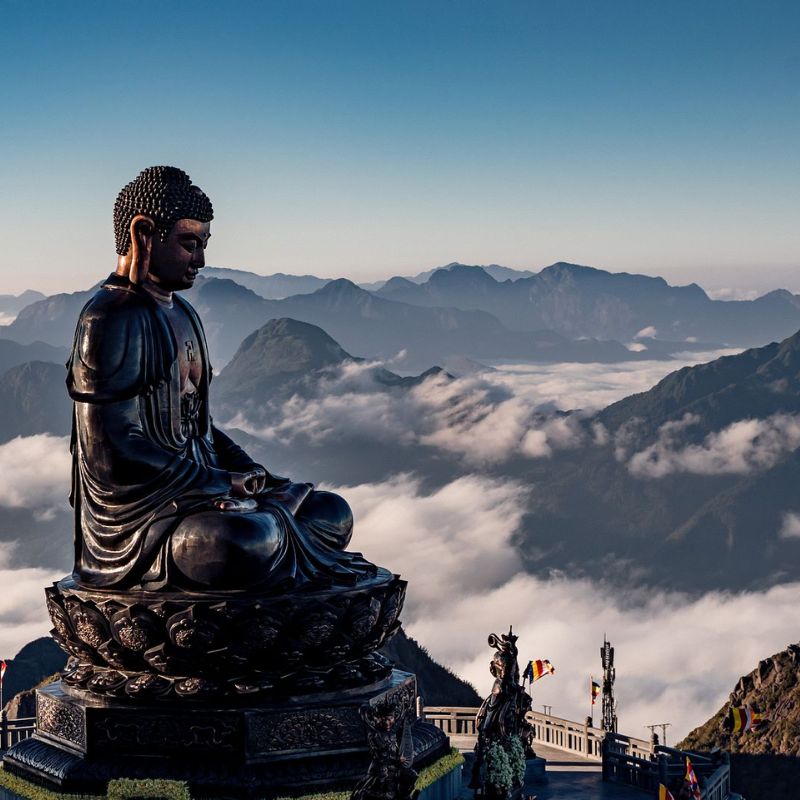
- Great Buddha Statue: Representing the Buddha, it serves as a reminder of the teachings and principles of Buddhism, including enlightenment, peace, and wisdom.
- Stupa: A stupa is a Buddhist commemorative monument, usually housing sacred relics. The stupa at Fansipan is a place for worship and contemplation, symbolizing the enlightened mind of the Buddha.
- Kim Son Bao Thang Tu: This temple is another key spiritual site on Fansipan. It’s a place of worship and plays a significant role in the religious life of the local community. The temple’s design and decorations are typically intricate, reflecting the artistry and religious symbolism of the region.
These attractions, each with their unique spiritual and cultural significance, contribute to Fansipan Mountain’s reputation as a profound spiritual destination, offering visitors not only natural beauty but also deep insights into Buddhist philosophy and the region’s religious heritage.
Take a selfie at the Fansipan summit
Taking a selfie at the summit of Fansipan Sapa Mountain is a moment to cherish, a personal triumph blended with the awe-inspiring beauty of nature. As you stand at the peak, the highest point in Vietnam, you’re not just at a physical altitude but also at an emotional high. Surrounded by the breathtaking panorama of lush mountain ranges, with the sky a brilliant canvas of blue and occasional wisps of clouds, you capture this majestic scenery with your phone.
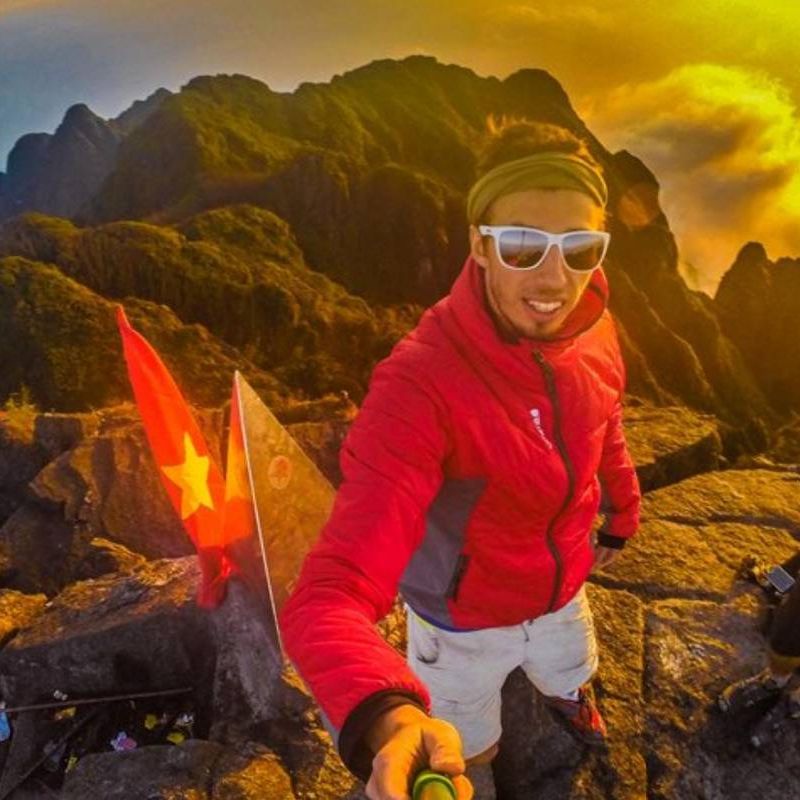
Dressed in hiking gear, the exhilaration of the climb is evident in your smile, a testament to the journey undertaken. The summit marker in the background is more than a sign; it’s a symbol of achievement, a reminder of the journey that led you here. This selfie isn’t just a photograph; it’s a story, a memory encapsulated in a single frame, a keepsake of your adventure at the roof of Indochina.
A brief manual for trekking to Mount Fansipan
What time of year is ideal for hiking Mount Fansipan?
The best times to hike Mount Fansipan Sapa are either in the spring (March to May) or autumn (September to November). During these periods, the weather is more stable with less rain, clearer skies, and milder temperatures.
The summer months, particularly from June to August, are monsoon season, which can make trails slippery and hiking more challenging. Similarly, the winter months (December to February) can be very cold and foggy.
Recommended hiking paths in Fansipan Mountain
There are a variety of hiking trails in Fansipan Sapa, Vietnam, ranging in complexity from easy to strenuous. Here are a few recommended hiking trails:
- Tram Ton Route: This is the shortest and most popular route, taking about 1-2 days. It starts from the Tram Ton pass, offering a mix of moderate to challenging trekking.
- Sin Chai Route: A less-traveled path, this route is more challenging and takes you through more remote and scenic areas. It typically takes 2-3 days.
- Cat Cat Route: This route starts from the Cat Cat village and is known for its cultural experience, as it passes through local Hmong villages. It’s a bit longer and can take up to 3 days.
Notes for your 1st-time Fansipan trekking
These pointers may be useful if this is your first climb up Fansipan Sapa Mountain in Vietnam:
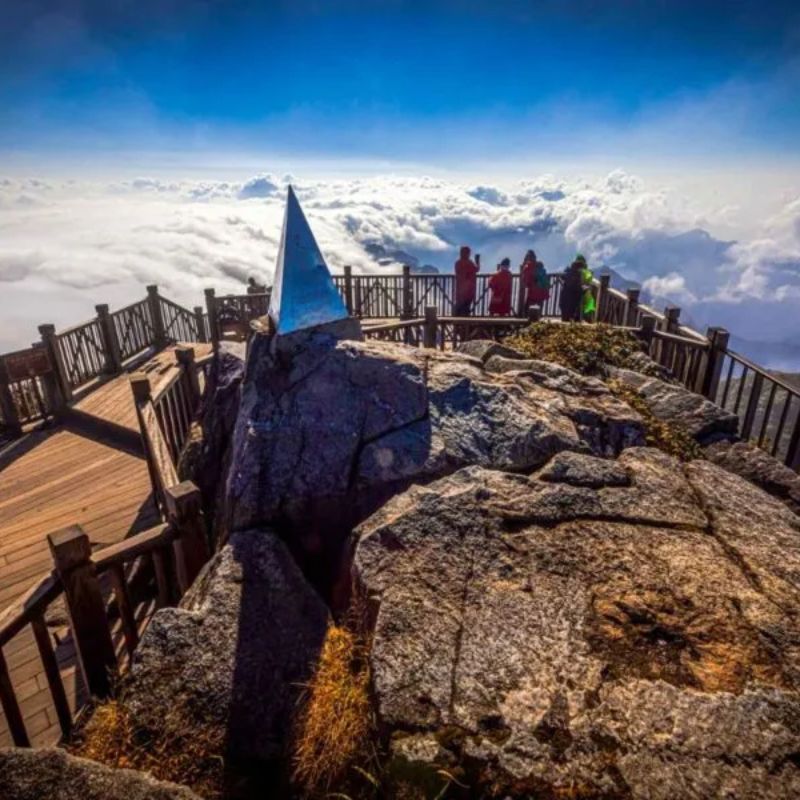
- Physical Preparation: Ensure you’re in good physical condition. The trek can be strenuous, so prior hiking experience and stamina are important.
- Hiring a Guide: For first-timers, it’s advisable to hike with a guide. They can navigate the trails and provide insights into the local flora, fauna, and culture.
- Acclimatization: Be mindful of altitude sickness. Take it slow, stay hydrated, and give your body time to adjust to higher elevations.
- Local Customs and Environment: Respect local customs, especially if your route passes through ethnic villages. Also, practice Leave No Trace principles to preserve the natural environment.
- Emergency Preparations: Carry a basic first aid kit, and ensure you have a way to communicate in case of emergencies. Mobile reception can be spotty, so plan accordingly.
Nearby Fansipan Mountain
Near Fansipan Sapa, there are several attractions, restaurants, and hotels that can enhance your visit to this majestic area.
Attractions
Sapa Town: Imagine a colorful, bustling town nestled in the mountains, with misty mornings and vibrant markets. Sapa is just that! It’s a cultural melting pot, where you can meet local ethnic communities like the H’mong and Dao. Don’t miss the chance to wander through its markets; you might find some beautiful handmade textiles to take home!
Muong Hoa Valley: This valley is like a giant, green, and serene patchwork quilt. The rice terraces here are a sight to behold, especially when they’re lush and green. It’s a hiker’s paradise and a great place to interact with local villagers, and maybe even share a meal or a story!
Silver Waterfall (Thac Bac): About a 30-minute drive from Sapa, this waterfall is like nature’s own dramatic performance. The water cascades down with such power and beauty! It’s a perfect spot for some amazing photos and to feel the cool mist on your face.
Restaurants
Good Morning Vietnam Restaurant: This cozy spot serves up some delicious Vietnamese dishes. The pho is a must-try, and the warm, friendly atmosphere makes it a perfect place to relax after a day of exploring.
Sapa O’Chau Cafe: More than just a cafe, it’s a place with a heart. They not only serve great coffee and local dishes but also support community projects. It’s a great spot to unwind and feel good about where your money’s going.
Hotels
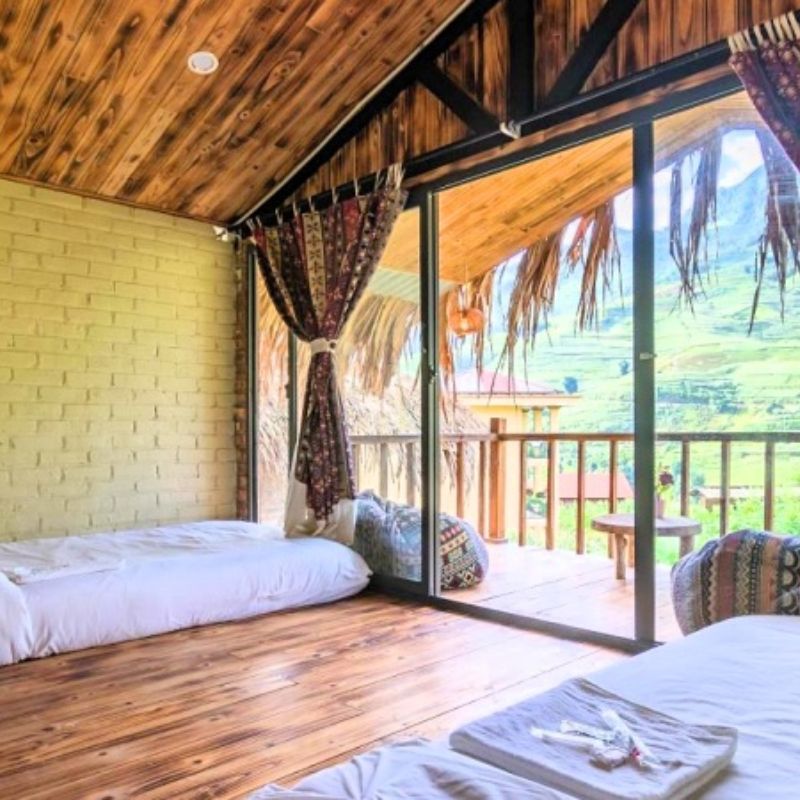
Topas Ecolodge: Imagine waking up to breathtaking mountain views from a cozy bungalow. Topas Ecolodge is all about sustainable luxury. It’s peaceful, it’s beautiful, and it’s a great way to experience the natural beauty of the area.
Address: Thanh Kim, Sa Pa, Lao Cai, Vietnam
Sapa Jungle Homestay: Nestled amidst lush greenery and terraced fields, Sapa Jungle Homestay offers a tranquil escape from the hustle and bustle of city life. It’s not just a place to stay; it’s an experience. The homestay is surrounded by the verdant jungle, giving you a sense of being in the heart of nature. It’s perfect for travelers who seek a more authentic and intimate experience in the beautiful region of Sapa.
Address: 536 Đường Điện Biên Phủ, TT. Sa Pa, Sa Pa, Lào Cai, Vietnam [Direction]
Hotel de la Coupole – MGallery: This hotel is like a piece of art! The decor is unique, blending local culture with French elegance. It’s a luxury experience that’s hard to forget and adds that extra ‘oomph’ to your stay in Sapa.
Address: 1, Hoang Lien Street Sapa District, Lao Cai Province Sapa, 033000, Vietnam
Sapa Legend Hotel & Spa: Modern, comfortable, and with great views – that’s Sapa Legend Hotel & Spa for you. It’s a lovely place to come back to after a day of adventure, offering all the comforts you could ask for.
Address: 1 Thủ Dầu Một, TT. Sa Pa, Sa Pa, Lào Cai, Vietnam
Conclusion
A visit to Fansipan Sapa Mountain is not merely a trek; it’s an immersive journey into the heart of Northwestern Vietnam’s unparalleled beauty. As the highest peak in Vietnam and Indochina, Fansipan stands as a testament to nature’s grandeur, offering breathtaking landscapes, lush valleys, and glimpses into traditional hill village life. Whether you’re a seasoned trekker or an admirer of panoramic views, Fansipan provides an unforgettable experience that transcends the ordinary. So, as you descend from the summit, carry with you the memories of this majestic mountain, the echoes of its natural marvels, and the indelible mark of a truly extraordinary adventure.
FAQs
How challenging is the trek to Fansipan’s summit?
The trek to Fansipan’s summit can be challenging, especially for those not accustomed to high-altitude trekking. Often dubbed the ‘Roof of Indochina,’ Fansipan’s trails vary in intensity, ranging from moderate to strenuous. The ascent involves navigating steep, rugged paths, enduring changes in weather conditions, and ascending to an elevation of 3,147 meters (10,326 feet). Trekkers should be in good physical condition, adequately acclimatized to high altitudes, and equipped with suitable gear.
Are there accommodation options on Fansipan?
There are no accommodation options directly on Fansipan’s summit. Most visitors stay in Sapa town, where various lodging choices are available, ranging from budget guesthouses to luxury resorts. In Sapa, you can find hotels, guesthouses, and resorts catering to different budgets and preferences. Accommodations in Sapa offer a range of amenities and services, providing a comfortable base for trekkers before and after their journey to Fansipan.
Can I take a day trip to Fansipan from Hanoi?
While it’s possible to take a day trip to Fansipan Sapa from Hanoi, it’s important to note that the journey involves considerable travel time, and a day might not be sufficient to fully enjoy the experience. The distance between Hanoi and Sapa, the town near Fansipan, is significant, usually taking around 5-6 hours by car or train.
If you opt for a day trip, it typically involves an early morning departure from Hanoi, a day of exploration in the Fansipan area, and a return to Hanoi in the evening. However, this might mean limited time for trekking, sightseeing, and appreciating the natural beauty of the region.
What should I pack for a Fansipan trek?
When preparing for a Fansipan Sapa trek, packing wisely is essential for a comfortable and enjoyable journey. Sturdy, waterproof hiking boots are a must, given the rugged terrain and unpredictable weather conditions. Dress in layers to accommodate varying temperatures, and include a waterproof jacket to shield against rain.
Pack a backpack with essentials such as sufficient water, energy snacks, a first aid kit, and a map or navigation tools. Sunscreen, a hat, and sunglasses protect against the sun’s rays. A camera is advisable to capture the breathtaking landscapes along the way. Don’t forget to bring some cash for any local purchases or services. Being well-prepared ensures that you can fully savor the adventure and overcome the challenges of trekking Fansipan with confidence.
Are there age restrictions for the Fansipan cable car?
There are no specific age restrictions for the Fansipan Sapa cable car. However, it’s recommended to consider individual health conditions, especially for elderly or very young travelers. Cable cars typically have safety measures in place, and passengers, including children and the elderly, are usually allowed to use them. However, individual health conditions, mobility, and comfort levels should be taken into consideration, especially for those who may be sensitive to heights or have medical concerns.

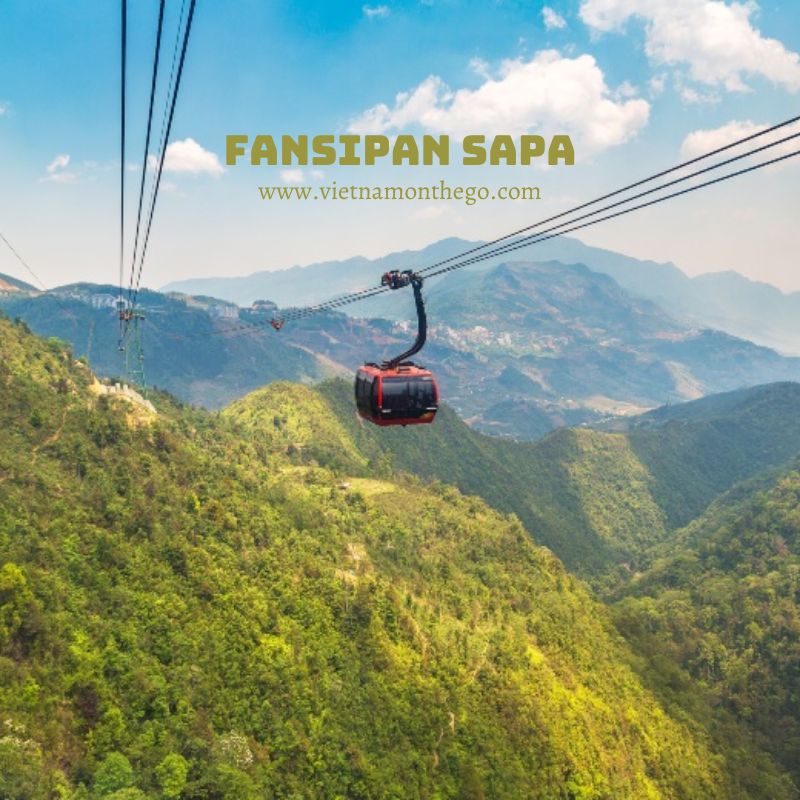
![[1 DAY] Fansipan Hiking Tour From Sapa with Local Expert fansipan hiking 1 day tour](https://vietnamonthego.com/wp-content/uploads/2023/12/fansipan-hiking-tour-1-day-280x280.jpg)
![[2 DAYS 1 NIGHT] Fansipan Mountain Hiking From Sapa Fanispan hiking 2d1n tour](https://vietnamonthego.com/wp-content/uploads/2023/12/fansipan-hiking-tour-2-1-280x280.jpg)
![[1 DAY] Trekking in Sapa Through Muong Hoa Valley - EASY Route](https://vietnamonthego.com/wp-content/uploads/2023/12/Trekking-in-Sapa-Through-Muong-Hoa-Valley-2-280x280.jpg)
![[1 DAY] Trekking in Sapa Through Highest Village](https://vietnamonthego.com/wp-content/uploads/2023/12/fansipan-hiking-tour-1-day-3-280x280.jpg)
![[1 DAY] Trekking In Sapa Through Muong Hoa Valley - HARD Route](https://vietnamonthego.com/wp-content/uploads/2023/12/Muong-Hoa-Valley-280x280.jpg)
![[2 DAYS 1 NIGHT] Sapa Trekking Tour with Local Guide](https://vietnamonthego.com/wp-content/uploads/2023/12/Sapa-Trekking-Tour-with-Local-Guide-9-280x280.jpg)
![[2 DAYS 1 NIGHT] Sapa Trekking with Homestay in Village - EASY Trekking](https://vietnamonthego.com/wp-content/uploads/2023/12/fansipan-hiking-tour-1-day-5-280x280.jpg)